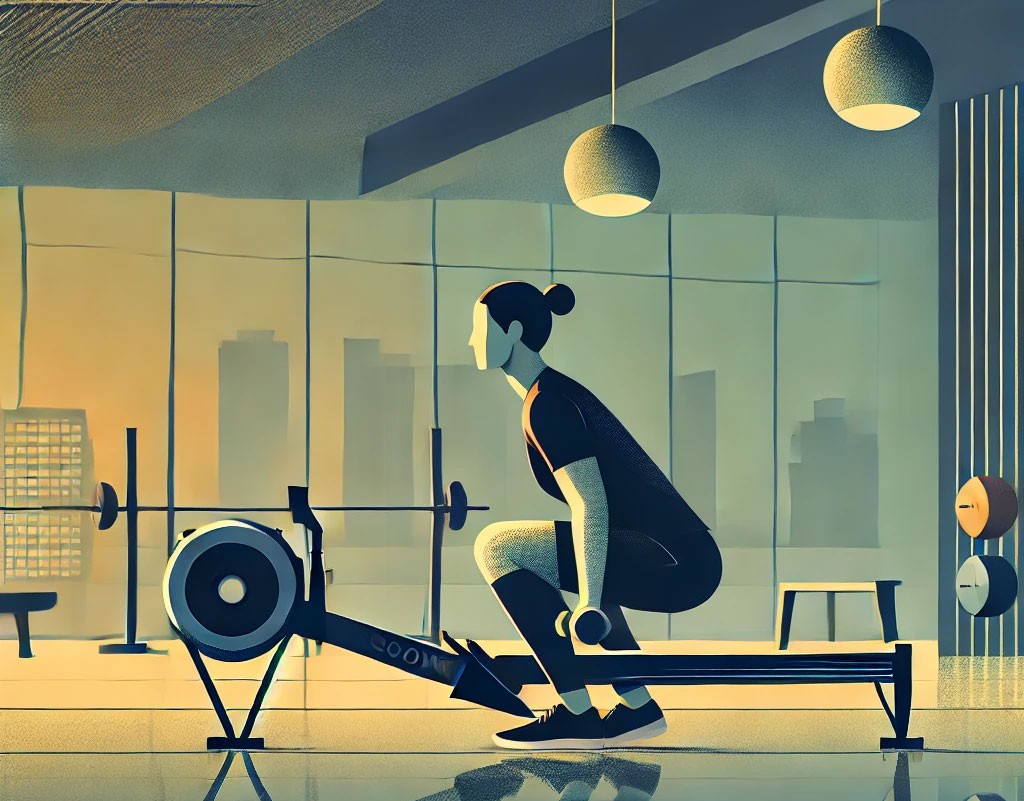Rowing is one of the best exercises for full-body strength and cardiovascular endurance. Whether you’re rowing on water or using an indoor rowing machine, building strength is essential to improve your performance, prevent injuries, and make every stroke powerful and efficient.
This guide will provide you with a beginner-friendly strength training plan designed to build the muscles you need for rowing. Let’s get started!
Why Strength Training is Essential for Rowing
Rowing is a strength-endurance sport. It combines cardio fitness with power, requiring strong legs, core, back, and arms to produce an effective stroke. Strength training:
- Enhances stroke power and speed.
- Improves endurance for longer sessions.
- Strengthens stabilizing muscles to maintain proper form.
- Reduces the risk of injury, particularly in the back and shoulders.
Key Muscle Groups Used in Rowing
To build strength for rowing, focus on these key muscle groups:
- Legs: Quadriceps, hamstrings, glutes, and calves drive the power in the rowing stroke.
- Core: Abdominals, obliques, and lower back provide stability and transfer power.
- Back: Latissimus dorsi (lats), rhomboids, and traps engage during the pull phase.
- Arms and Shoulders: Biceps, triceps, deltoids, and forearms finish the stroke with control.
By strengthening these areas, you’ll maximize power and improve rowing efficiency.
Beginner’s Strength Training Plan for Rowing
This 4-week plan focuses on building functional strength for rowing. You’ll perform full-body workouts 2–3 times per week with an emphasis on compound movements.
Warm-Up (5–10 Minutes)
Before starting each workout, prepare your body with a warm-up:
- 3 minutes light rowing, cycling or brisk walking.
- Dynamic stretches: leg swings, arm circles, and bodyweight squats.
Workout Plan
Day 1: Lower Body Focus + Core
| Exercise | Sets | Reps | Rest |
|---|---|---|---|
| Bodyweight Squats | 3 | 12–15 | 60 secs |
| Dumbbell Lunges | 3 | 10 per leg | 60 secs |
| Glute Bridges | 3 | 12 | 45 secs |
| Deadlifts (with dumbbells) | 3 | 8–10 | 90 secs |
| Plank Hold | 3 | 30–45 secs | 30 secs |
| Russian Twists (no weights) | 3 | 15 per side | 30 secs |
Notes: Focus on slow, controlled movements, particularly during squats and lunges. Engage your core throughout the plank and Russian twists.
Day 2: Upper Body and Back
| Exercise | Sets | Reps | Rest |
|---|---|---|---|
| Push-Ups (modified if needed) | 3 | 10–12 | 60 secs |
| Bent-Over Dumbbell Rows | 3 | 10–12 | 60 secs |
| Seated Shoulder Press | 3 | 8–10 | 60 secs |
| Dumbbell Bicep Curls | 3 | 12 | 45 secs |
| Dumbbell Tricep Kickbacks | 3 | 12 | 45 secs |
| Supermans | 3 | 12 | 30 secs |
Notes: For rows, keep your back straight and focus on pulling through your lats. If push-ups are challenging, start with knee push-ups.
Day 3: Full-Body Strength + Core
| Exercise | Sets | Reps | Rest |
|---|---|---|---|
| Goblet Squats (with weight) | 3 | 12 | 60 secs |
| Dumbbell Deadlifts | 3 | 8–10 | 90 secs |
| Push-Ups | 3 | 8–12 | 60 secs |
| Plank Shoulder Taps | 3 | 12 per side | 30 secs |
| Dumbbell Farmers’ Carry | 3 | 30–45 secs | 30 secs |
Notes: Farmers’ carry strengthens your grip, shoulders, and core—essential for rowing. Maintain proper form and engage your core throughout.
Cool Down and Stretch (5–10 Minutes)
End each workout with light stretching to aid recovery and flexibility:
- Hamstring stretch.
- Quad stretch.
- Cat-Cow stretch for the back.
- Shoulder and arm stretches.
How This Plan Improves Your Rowing
- Leg Strength: Squats, lunges, and deadlifts build power for the drive phase of the stroke.
- Core Stability: Planks and twists stabilize your movements and transfer power efficiently.
- Upper Body Strength: Rows, push-ups, and shoulder presses strengthen your back, shoulders, and arms for the pull phase.
Incorporating this strength plan into your routine will make your strokes stronger, smoother, and more powerful—whether you’re rowing on water or indoors.
Conclusion
Building strength is essential for rowing success, and this beginner-friendly plan will give you the foundation you need. By focusing on your legs, core, and upper body, you’ll develop the power and endurance to row efficiently and avoid injury.
Are you ready to take your rowing to the next level? Start this plan today and watch your strength—and your rowing—improve!
Download the plan
Have you tried strength training for rowing? Let me know how it’s going in the comments below! And don’t forget to subscribe to Row Flow for more tips, workouts, and inspiration.


